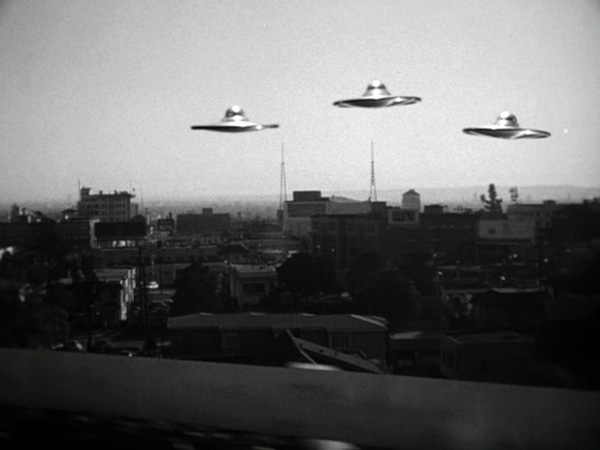Since I'm trying to write about these same TVs I'm going to try my best to describe what's going on without forcing you to go to store to see them in person.
First off, look carefully at these two clips from The Twilight Zone:
Don't feel the need to watch the whole thing, or pay attention to what's going on with the story. Just look at the quality of the image and the way things move.
You may not be able to describe it in words, but you can probably tell that there's something different between the way those two clips look.
The reason is the first clip is shot on film while the second is shot on video. The way the light bouncing off the actors and the surroundings is converted to a series of fixed images is different between the two methods, which is why they look different.
Okay, I lied. I really do want you see these TVs in person, so put on your shoes and grab your keys...

Go to Shopko or Walmart or some other big store that has a wall of TVs all playing the same movie. If you look closely, the movie will look different on some TVs (namely the big expensive ones) than others.
The difference is almost as stark as it is in those Twilight Zone clips. Two TVs playing the same thing, but one looks like a movie and one looks like basic cable. I was at Shopko the other day and saw Toy Story 3 playing on the TVs and it looked like a videogame cut-scene.
To really see this in action, go to a big electronics store like Best Buy where they have the fancy TVs playing a demo reel that over-emphasizes this effect, supposedly to impress you. What I saw was big budget live action features that looked like soap operas or behind-the-scenes footage and even bigger budget animated films that looked like the cheap educational shows on Nick Jr.
What makes these TVs look different is that they have a really high refresh rate of 240Hz, compared to the 60Hz of a regular TV. Every manufacturer has this and each have their own special-sounding name for it. Sony has FlowMotion, Toshiba has ClearFrame (or ClearScan; they call it both ways on their site) Samsung has it, but doesn't have a fancy name for it.
What it's actually doing is taking the frames from the movie and interpolating new inbetween frames to "smooth out" the motion, and in turn changing the picture's inherent visual qualities, just like the videotaped Twilight Zone episodes.
The stated purpose of this is to reduce blurring of images, which may look good watching sports, (which is all you may see on some TV demos) but disastrous for films where the blurring is specifically part of the look of the medium, or even worse CG animation where the blurring is consciously added to make the these wholly manufactured images look more "lifelike".
I don't know what this does to hand-drawn animation. I couldn't bring myself to ask the sales clerk to pop in a Blu-Ray of Princess and the Frog just so my blog post could be more thorough.
Plus blurriness is a normal part of human vision (both from depth of field and fast motion). So taking it away for the sake of technological one-ups-manship and "realism" actually makes it look more fake.
I'm already disillusioned about CG films on Blu-Ray in general because I think the added clarity just amplifies the "CG-ness"of it all and reminds me I'm watching a computer model rather than an actual character with a personality. These TVs just kick it further into the uncanny valley.




